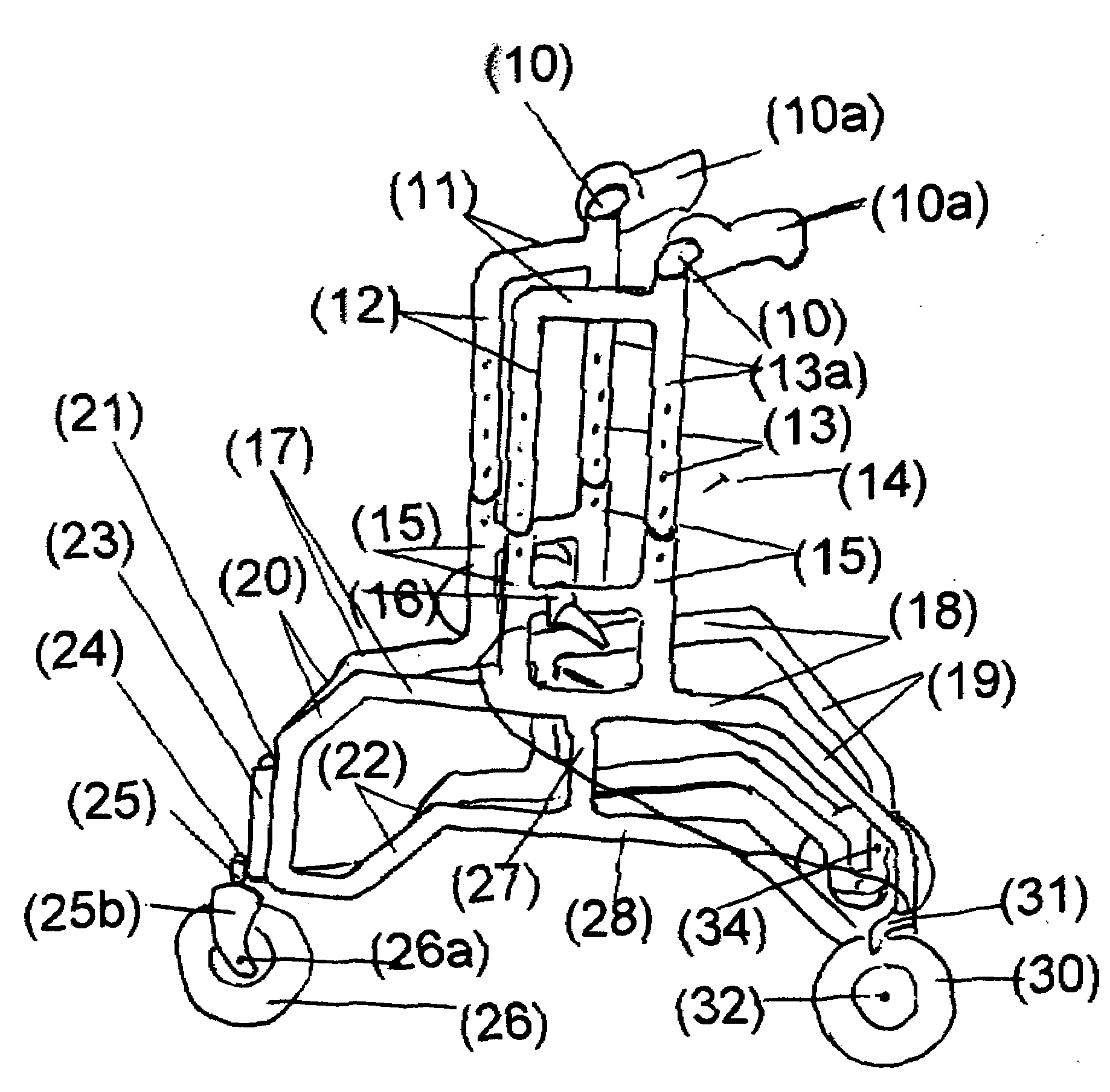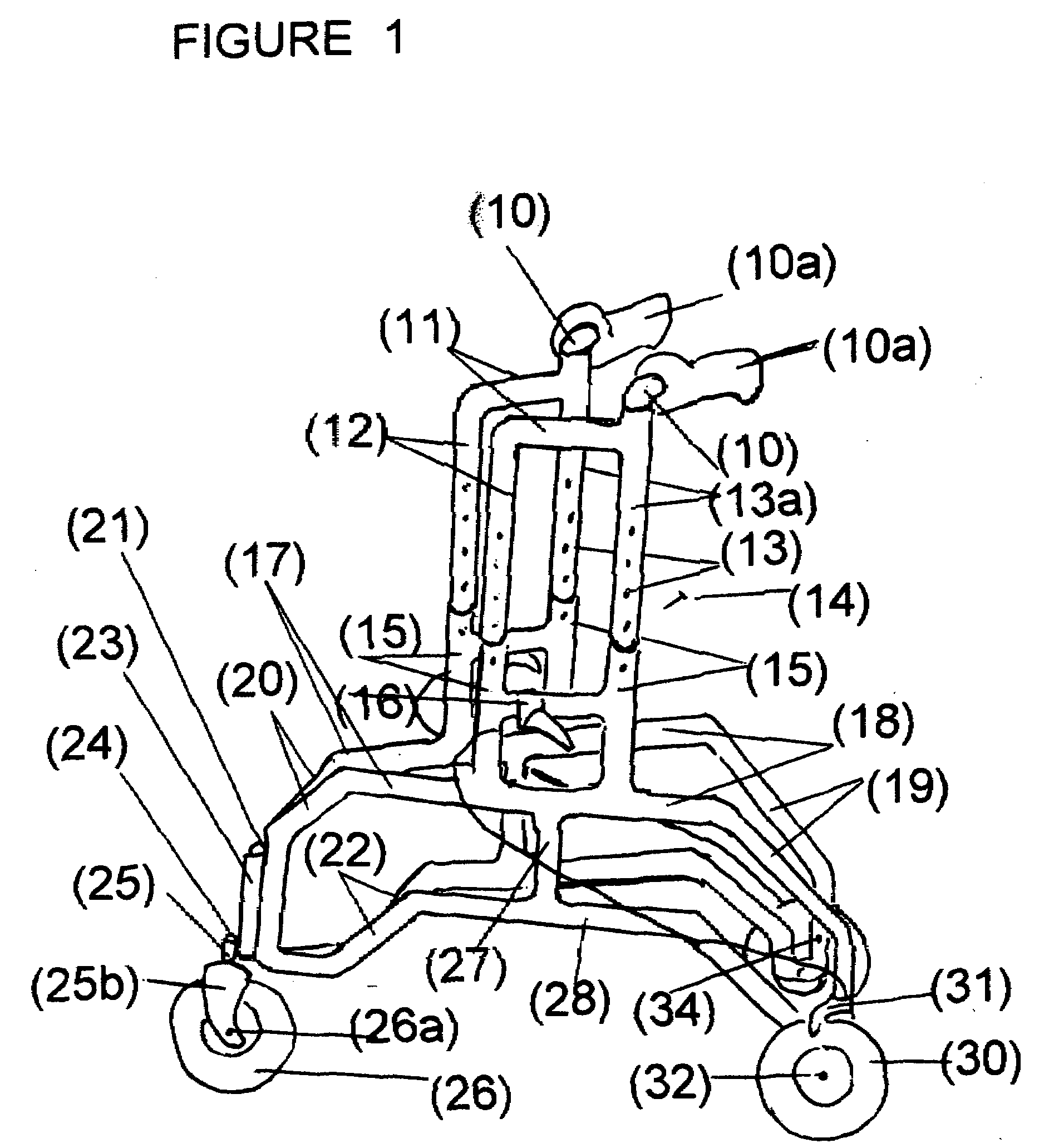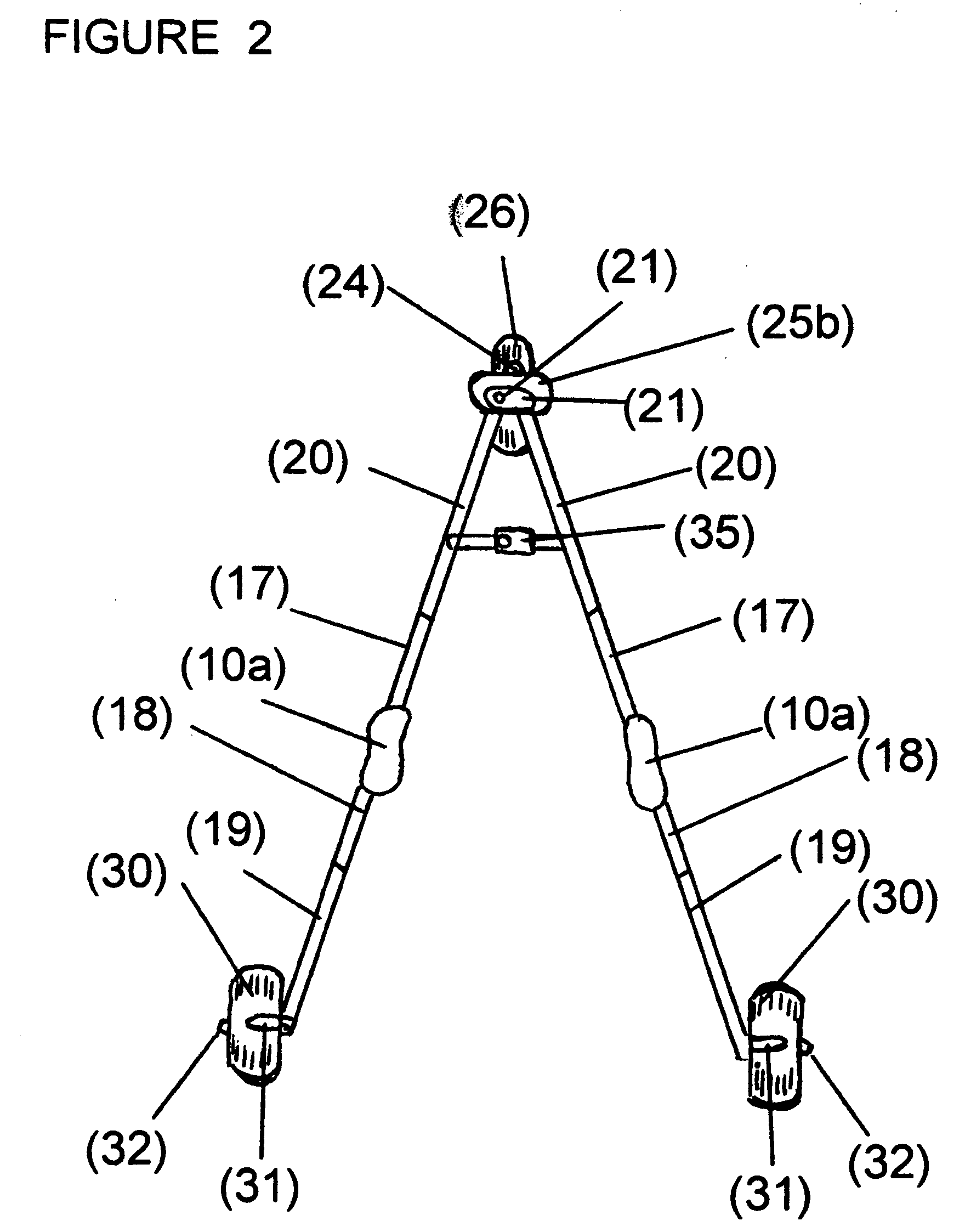Crutch stroller
a technology for strollers and strollers, applied in the field of mobility aids, can solve the problems of limiting exercise activities, prolonging rehabilitation, and none of the devices in the field of wheelchairs can provide the assistance needed for the rehabilitation of weak legs
- Summary
- Abstract
- Description
- Claims
- Application Information
AI Technical Summary
Benefits of technology
Problems solved by technology
Method used
Image
Examples
Embodiment Construction
—FIGS. 1-6 PREFERRED EMBODIMENT
[0033]FIG. 1 Showing a left sided view of the crutch stroller demonstrates from top to bottom 10a, bilateral arm pads adhesively attached to “L” shaped arm pad support bars 10, having the lower end inserted into the upper end of the rear vertical support bars 13a. Bilateral front and rear adjustable vertical support bars 12, 12a, 13, and 13a, are bilaterally connected at the upper surface by horizontal connectors 11, to reinforce the vertical support bars 12, 12a, 13, and 13a. the lower distal ends of the vertical support bars 12, 12a, 13a, being male ends are inserted into the upper female openings of the bilateral risers 15, allowing for the vertical descent of the vertical support bars 12, 12a, 13, and 13a, whereby accommodating the adjustability feature of the vertical supports by the placement of pins 14, into adjustment holes 14a. Each vertical riser 15, is connected front to rear bilaterally by riser connectors 15a, to accommodate a stationary h...
PUM
 Login to View More
Login to View More Abstract
Description
Claims
Application Information
 Login to View More
Login to View More - R&D
- Intellectual Property
- Life Sciences
- Materials
- Tech Scout
- Unparalleled Data Quality
- Higher Quality Content
- 60% Fewer Hallucinations
Browse by: Latest US Patents, China's latest patents, Technical Efficacy Thesaurus, Application Domain, Technology Topic, Popular Technical Reports.
© 2025 PatSnap. All rights reserved.Legal|Privacy policy|Modern Slavery Act Transparency Statement|Sitemap|About US| Contact US: help@patsnap.com



